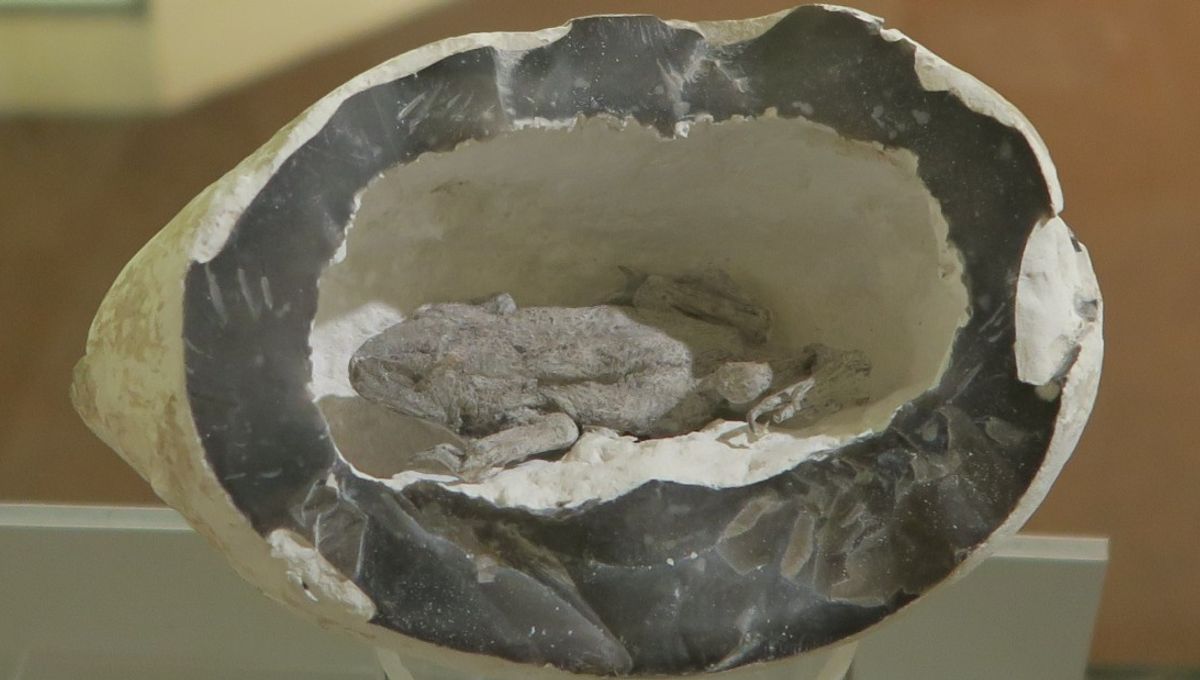
Cracking open rocks can yield all kinds of surprises. Ancient water. Rare fossils. Living frogs trapped in a pocket. If that last one got your “Wait, what?” senses tingling, I don’t blame you. It seems impossible, and yet discoveries of finding amphibians locked in stone are surprisingly widespread.
One such story unfolded in the Nybro quarry back in 1733, where Johan Gråberg was presented with a curious sandstone bolder. Inside it was a grayish frog with something yellow covering its mouth. Unimpressed by its minimal reactivity, Gråberg – for some strange reason – decided to shovel the thing to death.
His decision would haunt him, writes David Bressan for Forbes, and he wished he had not killed “that extraordinary Animal, which might have lived for many hundreds of years within its stony Prison”. In penance, presumably, he took the frog’s mangled corpse on the road to see if any scholars could explain what had been found – apparently living – in the sandstone.
The frog of Nybro, as it would become known, caught the attention of Dr Johan Phil, who reasoned that maybe the condemned amphibian had effectively been born into the rock when some frogspawn slipped into the gap. The theory didn’t impress many, however, and the subsequent paper was rejected in 1741.
Similar reports have been made across the globe, periodically capturing the imagination of scientists and the public alike. Even Professor William Buckland, the eccentric scientist who described the first-named dinosaur (and allegedly ate the heart of a king), got in on the fun.
In 1826, he was digging up rocks in his garden in the hopes of proving that toads could survive trapped in rock. He had stuffed them into pieces of limestone and sandstone and buried them a year earlier, because that’s the sort of thing people had time for in the 1820s. Unfortunately, he would see little success. The first exhumation revealed that a few toads in the porous limestone had lived, but that their seals were slightly broken. When he repeated the strange experiment with proper seals, every single toad died.
According to the Fortean Times, there have been around 210 reports of frogs or toads found entombed in stone, coal, and wood across North America, Africa, Australia, and New Zealand. One of the most recent included a toad in Texas that had allegedly been entombed in the cornerstone of a courthouse for 31 years. Old Rip, as he was known, had his five minutes of fame, but a lot of eyes were rolling at the claim.
There’s nothing to support the idea that large animals – insistent on eating, breathing, and defecating as they are – can survive locked in a confined space with no access to resources (the story is slightly different for tardigrades and dinosaur shrimp). That a frog couldn’t live entombed in rock seems obvious, really. Certainly enough to not spend two years of your life slowly murdering toads out in your garden, but we humans do find ourselves drawn to hoaxes – just look at you, reading this article. If you’re hungry for more, here are six of the biggest science hoaxes of all time.
Source Link: Toad In The Hole: The Myth And Mystery Of The Living Frogs Entombed In Rocks